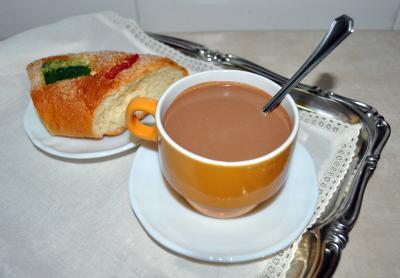Experiments psychologists from the Polytechnic University of Valencia and the University of Oxford say that the color of the cup matters in the flavor of hot chocolate - it tastes better in an orange or cream colored plastic cup than in a white or red one.
Our senses perceive food in a different way depending on the characteristics of the container from which we eat and drink, they say. They conducted an experiment in which 57 participants had to evaluate samples of hot chocolate served in four different types of plastic cup. They were the same size but of different colors: white, cream, red and orange with white on the inside.
And they surveys said: the flavor of chocolate served in orange or cream colored cups was better, according to the tasting volunteers. Imagine if they had used real cups instead of plastic.
However, the sweetness (not the flavor of the cocoa) and the aroma (the smell) were not really influenced by the color of the cup, despite the participants mentioning that the chocolate was slightly sweeter and more aromatic in a cream colored cup.

Surveys show hot chocolate tastes better in an orange colored plastic cup than in other plastic cups. This is not an actual plastic cup they used. Credit: SINC
"There is no fixed rule stating that flavour and aroma are enhanced in a cup of a certain colour or shade," Betina Piqueras-Fiszman, researcher at the Polytechnic University of Valencia told SINC. "In reality this varies depending on the type of food, but the truth is that, as this effect occurs, more attention should be paid to the colour of the container as it has more potential than one could imagine."
According to the authors, these results are relevant for those scientists interested in understanding how the brain integrates visual information not just from the food itself but from the receptacle or container from which it is consumed.
They also say this information could encourage chefs, catering professionals and even the packaging industry to think more about the color of crockery and packaging. As the researcher explains, "it is a case of experimenting to understand how the container itself affects the perceptions that the consumers have on the product."
In the same article they also noted the conclusions of previous studies that also confirm the effect of the container on the sensory characteristics of the food or beverage; from yellow tins to improve the flavor of lemon to soft drinks in cold colors, like blue, to seem more thirst-quenching than warm colors like red. Drinks in pink containers are even perceived as being more sugary.
In other psychology surveys, it has been found that a strawberry mousse appears to be sweeter and more intense on a white plate compared to a black plate. And as for coffee, the majority of those surveyed associated brown packaging to a stronger flavor and aroma, whereas reds seem to accentuate this sensation and blues and yellows make the drink seems softer.
Published in the Journal of Sensory Studies.





Comments